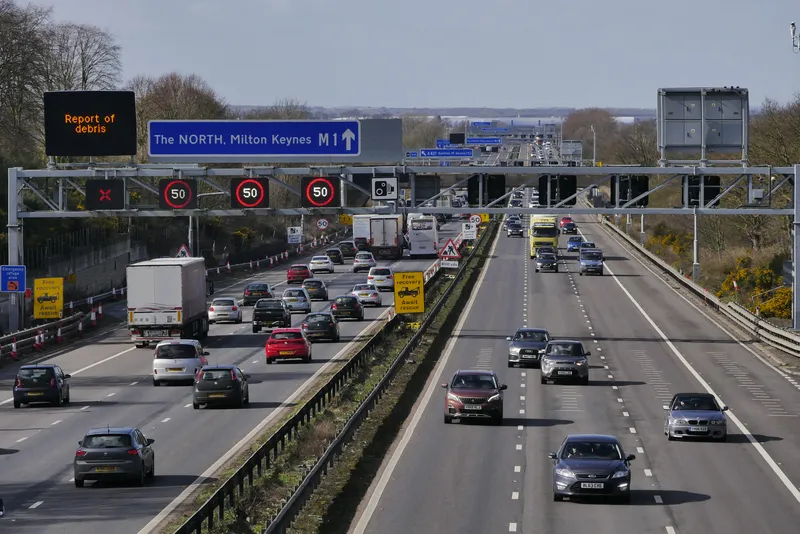The UK Government is now working on a plan to address the road safety issues caused by driving under the influence of drugs. A panel of experts has been set up to evaluate the levels of various illegal drugs in the bloodstream that would affect driving ability.
March 22, 2012
Read time: 5 mins
The UK Government is now working on a plan to address the road safety issues caused by driving under the influence of drugs. A panel of experts has been set up to evaluate the levels of various illegal drugs in the bloodstream that would affect driving ability. The panel will also set out a clear scientific background on which to base a proposed criminal offence of driving a vehicle immediately after consuming drugs. Existing laws are said to be inadequate, which is a major concern given the estimates for high levels of drug use amongst some drivers. Enforcement is also difficult under the current system. Police at present have to prove that a driver’s ability behind the wheel is impaired by drug use by employing ability tests based on asking suspects to carry out five simple tasks such as walking in a straight line and counting up to, or down from, 30. Those failing these physical tests are then required to provide a blood sample, as well as being examined by a doctor.
The timing of blood sampling is crucial and delays in this have allowed some drivers guilty of drug use to avoid serious charges. By comparison, UK police can easily deal with drivers suspected of alcohol use as clear guidelines are in existence, along with an effective testing process using roadside breath tests to identify offenders. Blood samples are used to back up the breath tests and as the sampling process is comparatively simple, delays are rare and the conviction rate for offenders reflects this. But as the existing process for catching drivers under the influence of drugs is relatively arbitrary, this makes it extremely difficult for police to implement. The threat posed by drivers using illegal drugs has been known for some time. Various studies have shown that there is a worrying percentage of drivers using illegal drugs at present, with up to 10% of drivers aged 17-24 for example. It has also been revealed by various studies that drivers under the influence of drugs may often be involved in criminal activity and may be driving without a valid licence or insurance and be using a defective vehicle. There are overlaps between the risk taking behaviour of those involved in criminal activity, regular drug users and people exhibiting poor judgement while behind the wheel. Statistical analysis shows criminals have a high incidence of drug use and involvement in serious road accidents.
But the panel’s task will be anything but simple and within the new laws, assessment levels will have to be established. Some drugs such as cannabis can remain at detectable levels within the bloodstream for up to one month, but whether this continues to pose a safety issue for drivers in terms of affecting ability has yet to be assessed accurately. The panel of experts will also have to assess the risks caused by the combination of illegal drug use and alcohol use on drivers, as well as the consumption of prescription medication. All this will have to be brought together under a single law providing a clear structure on permitted quantities in the bloodstream of alcohol, legal prescription medication and illegal drugs, as well as a combination of those factors. Setting the levels on which the new law will be based is already a matter of debate. Some campaigners believe that there should be zero tolerance regarding the presence of drugs such as cannabis in the bloodstream. Others say that as the drug’s presence in the bloodstream will only affect driving ability for the first 24 hours or so, the detection methods used and the law should be able to focus on the quantities of cannabis present in the system as well as when it was consumed. Similarly, synthetic opiates are present in certain prescription and over-the-counter medication available in Europe so any test would have define clearly what levels are permissible and what are indicative of heroin (or opium) use. For other illegal drugs such as cocaine, LSD or methamphetamine however there will be less of a debate as these all remain in the bloodstream for much shorter periods and the presence of anything more than minute trace quantities of them will be likely to be deemed as presenting a risk to driving ability.
In Australia police have been issued with kits that can use saliva samples determine whether drivers have been using illegal drugs within just five minutes. These kits are used at the roadside by Australian officers during standard procedures for stopping people suspected of driving under the influence. Roadside testing kits similar to those already in use in Australia have now been trialled in the UK to assess their effectiveness. The risks posed by drivers under the influence of drugs are also known in various developed and developing nations around the world. Other European countries are assessing the problem and looking at ways to tackle it, while the US has also recognised that the issue will have to be dealt with. Countries such as Thailand and India are also reviewing the issue. But so far, Australia is one of the first nations to have adopted a clear strategy for dealing with drivers under the influence of drugs, as well as providing police with the means to catch offenders. Available data shows drugs to present a threat to all road users, both in the UK and other countries. The UK’s5432 Department for Transport (DfT) data suggests driving under the influence of drugs was a contributory factor in 1,094 road traffic accidents during 2010. Of these, 51 were fatal accidents. DfT figures also show that there were 250 fatalities resulting from drink driving in 2010, around 14% of the overall figure for road deaths recorded during the year. Similar data is available in the US, which may also follow the lead so far set by Australia in tackling this road safety problem.
The timing of blood sampling is crucial and delays in this have allowed some drivers guilty of drug use to avoid serious charges. By comparison, UK police can easily deal with drivers suspected of alcohol use as clear guidelines are in existence, along with an effective testing process using roadside breath tests to identify offenders. Blood samples are used to back up the breath tests and as the sampling process is comparatively simple, delays are rare and the conviction rate for offenders reflects this. But as the existing process for catching drivers under the influence of drugs is relatively arbitrary, this makes it extremely difficult for police to implement. The threat posed by drivers using illegal drugs has been known for some time. Various studies have shown that there is a worrying percentage of drivers using illegal drugs at present, with up to 10% of drivers aged 17-24 for example. It has also been revealed by various studies that drivers under the influence of drugs may often be involved in criminal activity and may be driving without a valid licence or insurance and be using a defective vehicle. There are overlaps between the risk taking behaviour of those involved in criminal activity, regular drug users and people exhibiting poor judgement while behind the wheel. Statistical analysis shows criminals have a high incidence of drug use and involvement in serious road accidents.
But the panel’s task will be anything but simple and within the new laws, assessment levels will have to be established. Some drugs such as cannabis can remain at detectable levels within the bloodstream for up to one month, but whether this continues to pose a safety issue for drivers in terms of affecting ability has yet to be assessed accurately. The panel of experts will also have to assess the risks caused by the combination of illegal drug use and alcohol use on drivers, as well as the consumption of prescription medication. All this will have to be brought together under a single law providing a clear structure on permitted quantities in the bloodstream of alcohol, legal prescription medication and illegal drugs, as well as a combination of those factors. Setting the levels on which the new law will be based is already a matter of debate. Some campaigners believe that there should be zero tolerance regarding the presence of drugs such as cannabis in the bloodstream. Others say that as the drug’s presence in the bloodstream will only affect driving ability for the first 24 hours or so, the detection methods used and the law should be able to focus on the quantities of cannabis present in the system as well as when it was consumed. Similarly, synthetic opiates are present in certain prescription and over-the-counter medication available in Europe so any test would have define clearly what levels are permissible and what are indicative of heroin (or opium) use. For other illegal drugs such as cocaine, LSD or methamphetamine however there will be less of a debate as these all remain in the bloodstream for much shorter periods and the presence of anything more than minute trace quantities of them will be likely to be deemed as presenting a risk to driving ability.
In Australia police have been issued with kits that can use saliva samples determine whether drivers have been using illegal drugs within just five minutes. These kits are used at the roadside by Australian officers during standard procedures for stopping people suspected of driving under the influence. Roadside testing kits similar to those already in use in Australia have now been trialled in the UK to assess their effectiveness. The risks posed by drivers under the influence of drugs are also known in various developed and developing nations around the world. Other European countries are assessing the problem and looking at ways to tackle it, while the US has also recognised that the issue will have to be dealt with. Countries such as Thailand and India are also reviewing the issue. But so far, Australia is one of the first nations to have adopted a clear strategy for dealing with drivers under the influence of drugs, as well as providing police with the means to catch offenders. Available data shows drugs to present a threat to all road users, both in the UK and other countries. The UK’s







